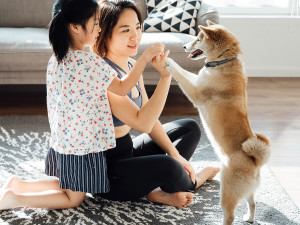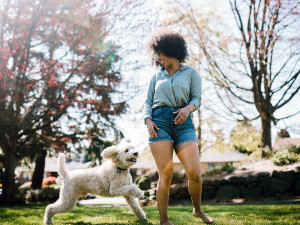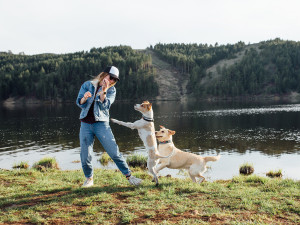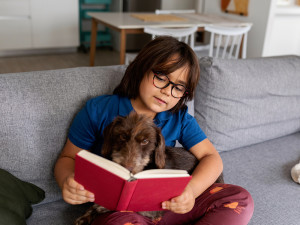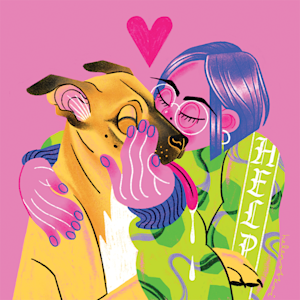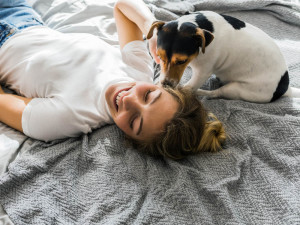Safety Tips for Living with Babies and Dogs In Healthy Harmony
Handling a houseful of love.
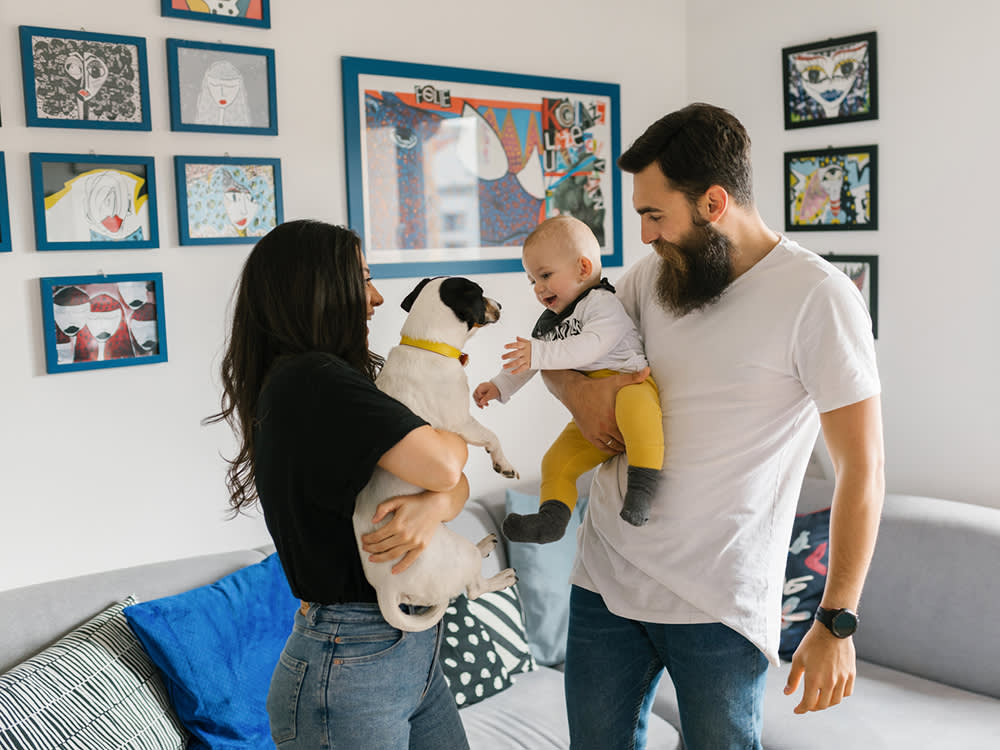
Share Article
Introducing a new baby to the house changes everything and that includes the life of your dog. It’s hard to explain what’s about to happen to them and common advice makes the situation even worse for your loyal friend. Some say pet parents should reduce the attention given to their dog by at least fifty percent in anticipation of a new bundle of joy. The logic is that new parents have less time to devote to their dog, so they should get used to it early. What?! Stop petting the dog? Less toys for the dog? No more lavishing loveopens in a new tab on your beloved beast, the one you committed to for life? No can do, parenting experts!
But some things will change and you don’t have to learn it all by doing, unlike changing diapers. Here are a few healthy boundaries that can keep your household — and ALL the members in it — happy and secure.

Get (totally free) deals for food, treats, accessories, tech, and way more pet parenting must-haves.
opens in a new tabIntroducing Your Dog to Baby
One way to begin the intro is to bring home the baby’s odor before the actual newborn. “When the baby is born, have someone bring home some of the clothing or blankets used by the baby while in the hospital for the pets to smell before the baby is discharged,” says Dr. Lori Teller, an associate professor in the Texas A&M University College of Veterinary Medicine & Biomedical Sciences.
Once they’re in the same room together, if possible, someone else should hold the baby while the parents are monitoring the pet on a leash. Let your dog calm down after you enter the house before introducing them. If you have multiple dogs in the householdopens in a new tab, try to do this one at a time.
Keeping Your Dog and Baby Happy
After the initial introductions go well, it’s important to continue to work to maintain a positive dog-baby relationship by teaching your dog appropriate behaviors around the baby and giving them plenty of attention and exercise to prevent jealousyopens in a new tab or feelings of being left behind.
Never leave baby alone with the dog.
No matter how much you trust your dog or how much impulse control they have, you should just never leave an infant alone with your dog baby. “The most important thing to remember is that a baby and a pet should never be left alone together, even if you think your pet would never hurt anybody,” Teller says. “This cannot be overstated.”
Too much could go wrong — a yanked dog ear, a stomped baby hand, a dog tail to the eyeball. It’s not fair to the baby, and it’s also not fair to your dog who is trying to be a good boy or girl but doesn’t quite realize how fragile their new person is.
Fit in quality time together.
You want to maintain a good relationship between your dog and your baby, and the baby can’t do much on that end yet. So make sure to engageopens in a new tab with both of them in shared quality time.“It’s important to find a way to pay attention to your pet while your baby is awake and active. You want your pet to know that the baby is a part of the family and everyone can enjoy time together,” Teller says.
“You can toss a few treats or verbally praise your dog for good behavior around an active baby. Unwittingly, by only paying attention to your pet when your baby is sleeping, you are teaching your pet that the baby is a negative in the pet’s life.”
Training is key for toy management.
Prepare your dog ahead of the baby’s arrival by doing a lot of trainingopens in a new tab so they can tell the difference between their toys and toys for the baby. The harder part might be teaching the baby what toys belong to your dog once they start getting mobile and curious. And the dog’s food. Not all dogs will be gracious about sharing, so redirect the baby with their own toys. If they refuse to be redirected, a baby gate between them will let your dog play or eat in peace.
On the note of inanimate objects, be sure to keep track of baby supplies, like pacifiers, baby bottle nipples, and small toys that can all be swallowed by dogsopens in a new tab and even require surgery to remove. Many medications, such as diaper rash ointment, can be toxic to pets and should be kept in a secure location, too.
Make use of baby gates.
It’s good to consider the baby gate at intervals even if nothing is going down between your family members. Sometimes, both baby and dog need space away from the constant attention of the other. This applies especially to old dogs or those with sore spots. Babies will definitely find your pet fascinating at some point and try to crawl after them everywhere. It might be cute to you, but a dog can lose patience suddenly. Even if they’re never snappish about it, they deserve some time alone. Baby gates, the Pack ‘n Play or crib — all these serve as fine barriers between your beasties.
Get a jump start with jumpy dogs.
If you haven’t already, teach your dog to “sit” and “stay” on cue. These basic commands can be handy when trying to manage a jumpy dogopens in a new tab. Remember, training takes time but with consistent use of positive reinforcement training, your dog can learn to sit and stay calmly when you’re holding the baby or when the baby is nearby.
Reward your dog when they behave calmly (even not on cue) around the baby with treats or affection. This positive reinforcement can help reinforce good behavior and create a positive association between your dog and the baby.
More tips for introducing your dog and baby
Prepare your dog by gradually exposing them to baby sounds and smells before the baby arrives.
Ensure your dog is up-to-date on their vaccinations and training.
Supervise all interactionsopens in a new tab between your dog and baby, and never leave them alone together.
Use a baby gate or playpen to create a separate space for your baby when necessary.
Reward your dog with treats and praise for calm, gentle behavior around the baby.
Set boundaries for your dogopens in a new tab, such as no jumping on furniture where the baby is present.
Maintain a consistent routine for your dog to help them adjust to the new family dynamic.
Seek professional help from a dog trainer or behaviorist if needed.
Elizabeth Kennedy
Elizabeth Kennedy is a freelance writer and editor in the San Francisco Bay Area.
Related articles
![Boy reading a book on the sofa to his dog]() opens in a new tab
opens in a new tabWhat Happens When Kids Read Books With Dogs
Spoiler alert: it’s more than just cute.
![]() opens in a new tab
opens in a new tabA Guide to Fostering Pets When You Have Kids
Advice from parents who truly do it all.
![]() opens in a new tab
opens in a new tabParenting a Dog Isn’t So Different From Raising a Kid, After All
OK, OK, don’t come for us. We know dogs and kids are very different to raise, but this study finds they respond to different parenting styles in similar ways.
![A happy woman is lying on a bed, her dog smelling her face.]() opens in a new tab
opens in a new tab9 Diseases You Can (and Definitely Can’t) Catch From Your Dog
Here’s what you can scratch off your “Worry About This” list.
